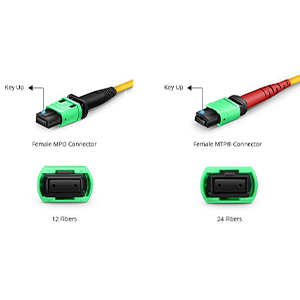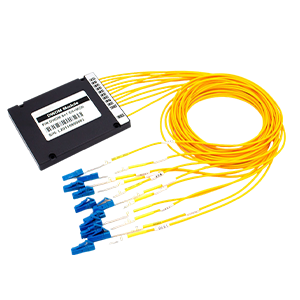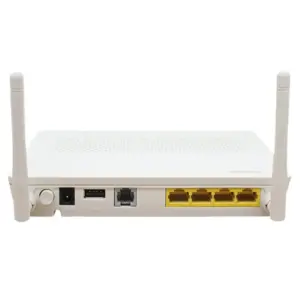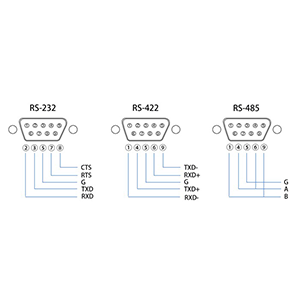Fiber amplifiers play an important role in fiber communication systems. This article will focus on the advantages of fiber amplifiers. We first briefly introduce the basic structure and working principle of fiber amplifiers, and explain how they differ from other types of amplifiers. Then, we will analyze in depth the main advantages of fiber amplifiers, including high gain, broadband performance, low noise, miniaturization and integration, and reliability.
We will explain how these unique advantages meet the needs of long-distance transmission, DWDM systems, and critical applications. Subsequently, we will analyze the advantages of fiber amplifiers in different application fields such as fiber communication and fiber sensing, and explain their unique advantages in various scenarios.
Overview of Fiber Amplifiers
Let me briefly introduce you to the overview of fiber amplifiers:
Basic structure and working principle of fiber amplifiers:
The basic structure of fiber amplifiers includes:
- Doped fiber: used as a gain medium, doped with rare earth ions
- Optical pump source: provides energy to excite doped ions
- Wavelength division multiplexer: couples pump light and signal light into optical fiber
- Optical isolator: prevents reverse light from interfering with the light source
The working principle is:
- Pump light excites rare earth ions in doped fiber to create a population inversion
- Input signal light and excited ions undergo stimulated radiation process
- Thereby achieving amplification of signal light
Differences from other types of amplifiers:
Compared with traditional electronic amplifiers:
- Fiber amplifiers are all-optical amplifiers, without the need for photoelectric conversion
- Has advantages such as wider bandwidth and lower noise
Compared with semiconductor amplifiers:
- Fiber amplifiers have simple structures and are easy to integrate
- Can achieve higher gain and lower noise
Compared with other optical amplifiers (such as Raman and Brillouin):
- Rare earth-doped fiber amplifiers have higher gain
- Can achieve a wider operating wavelength range
In short, fiber amplifiers, as a new type of all-optical amplification technology, have been widely used in fiber-optic communications, optical sensing and other fields with their unique advantages.
Main advantages of fiber amplifiers
Let me introduce you to the main advantages of fiber amplifiers in detail:
High gain:
- Fiber amplifiers can achieve very high gain levels, up to 40dB or more
- This makes fiber amplifiers very suitable for long-distance optical transmission
- It can effectively compensate for the large amount of loss during fiber transmission
- Thereby greatly improving the transmission distance of the entire system
< h3>Broadband performance:
- Fiber amplifiers have a fairly wide amplification bandwidth
- For example, EDFA can cover the C band and L band, with a bandwidth of more than 30nm
- This broadband characteristic is very suitable for DWDM optical communication systems
- It can achieve simultaneous amplification of multiple wavelength channels
Low noise:
- The noise level of fiber amplifiers is significantly lower than that of traditional electronic amplifiers
- Noise coefficient Generally, it can reach about 2-4dB
- This is conducive to improving the signal-to-noise ratio and sensitivity of the entire optical communication system
- Ensure the quality of the transmission signal and reduce the bit error rate
Miniaturization and integration:
- Fiber amplifier has a compact structure and small size
- Easy to integrate into optical fiber devices and optoelectronic integrated circuits
- Helps to achieve miniaturization and integration of optical communication systems
- Reduces the volume, weight and power consumption of the system</l i>
Reliability:
- Fiber amplifiers are composed of optical fibers and optical components
- Simple structure, no need for complex electronic circuits
- Therefore, they are highly reliable and have a long service life
- Particularly suitable for applications requiring high reliability, such as aerospace communications
In summary, fiber amplifiers have the advantages of high gain, broadband performance, low noise, miniaturization and integration, and high reliability, making them popular in the fields of fiber optic communications, optical sensing, etc.
Advantages of fiber amplifiers in different applications
Let me introduce you in detail the advantages of fiber amplifiers in different application fields:
Fiber optic communication field:
- Long-distance high-speed transmission: Fiber amplifiers can effectively compensate for transmission losses and achieve longer transmission distances
- Wavelength division multiplexing system: Broadband characteristics enable EDFA to simultaneously amplify multiple wavelength channels in DWDM systems
- Relay amplification application: High gain and low noise characteristics ensure Good performance in signal relay process
Fiber optic sensing field:
- Weak signal amplification: Fiber optic amplifiers can greatly amplify weak light signals from fiber optic sensors
- Multiplexed sensing: Due to its broadband characteristics, a single amplifier can simultaneously amplify multiple sensing signals
- High-sensitivity measurement: Low noise characteristics help improve the detection sensitivity of fiber optic sensing systems
Fiber optic laser field:
- Laser output amplification: EDFA and other devices can directly amplify the output power of the laser to generate higher power
- Fiber ring cavity amplification: Fiber amplifiers are used in fiber ring cavities to amplify the ring cavity signal
Fiber optic communication satellite field:
- Good radiation resistance: Fiber amplifiers have a simple structure and strong radiation resistance, making them very suitable for satellite communications
- Miniaturization and integration: Fiber amplifiers are small in size and light in weight, which is conducive to the miniaturization and integration of satellite systems
Optical Internet Network Field:
- Optical Switching Node Amplification: Fiber amplifiers can amplify signals at optical switching nodes and overcome switching losses
- Optical Path Selection Amplification: Specific optical path signals can be amplified according to path selection requirements
In short, fiber amplifiers play an irreplaceable role in many fields such as optical communications, optical sensing, optical lasers, satellite communications, and optical Internet networks with their advantages of high gain, broadband, low noise, and miniaturization, and are an important support for the development of optoelectronic technology.
Summary
Fiber amplifiers play a key role in optical fiber communication systems with their outstanding performance advantages. Our company has long been focusing on the research and development and production of optical communication equipment and its supporting products, and has rich industry experience. The fiber amplifier products we provide have reached the industry-leading level in terms of gain level, bandwidth characteristics, noise indicators, integration, and reliability, and can meet your requirements for high-performance optical networks.
Whether you are using fiber amplifiers for long-distance transmission, DWDM systems, or other fiber applications, we can provide you with professional selection services and technical support. At the same time, our engineering team will provide you with detailed installation and commissioning guidance and daily maintenance suggestions to help you give full play to the advantages of fiber amplifiers. Contact us now to learn more.
Optical Amplifier FAQ
An optical amplifier is a device that amplifies an optical signal directly, without the need for optical-to-electrical conversion, making it a key component in fiber optic communication systems.
The most common types of optical amplifiers are Erbium-Doped Fiber Amplifiers (EDFAs) and Raman Fiber Amplifiers (RFAs), each with their own advantages and applications.
Optical amplifiers offer several advantages, including the ability to amplify optical signals over long distances, provide high gain, and support high-bandwidth data transmission without electrical conversion.
Optical amplifiers can compensate for signal attenuation in long-haul fiber optic links, allowing for increased reach, higher data rates, and more efficient utilization of the fiber infrastructure.
Optical amplifiers provide signal amplification without the need for optical-to-electrical conversion, which can simplify network design, reduce power consumption, and improve reliability.
Optical amplifiers support the use of wavelength-division multiplexing (WDM) technologies, allowing multiple high-speed optical channels to be transmitted simultaneously over a single fiber.
Optical amplifiers can be more cost-effective and energy-efficient compared to traditional electronic repeaters, particularly in large-scale fiber optic networks with long transmission distances.
Optical amplifiers enable the deployment of modular and reconfigurable network architectures, allowing for easy expansion and upgrades to meet growing bandwidth demands.
Optical amplifiers can enhance the sensitivity and range of fiber optic sensors, enabling more accurate measurements and monitoring in a variety of industrial and scientific applications.
Ongoing advancements include the development of more compact, energy-efficient, and higher-performance optical amplifiers, as well as the integration of amplifier functionality with other photonic components.






